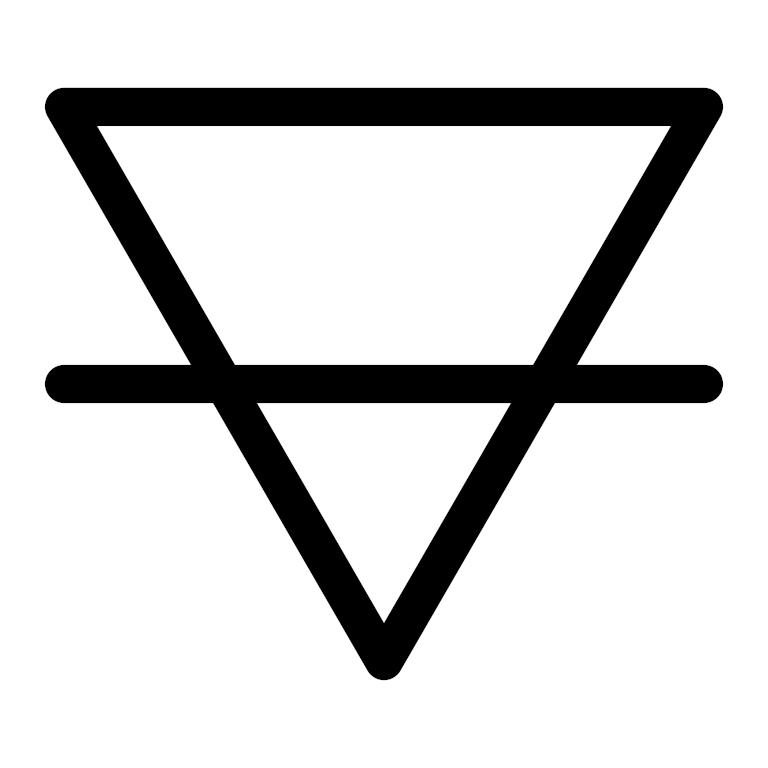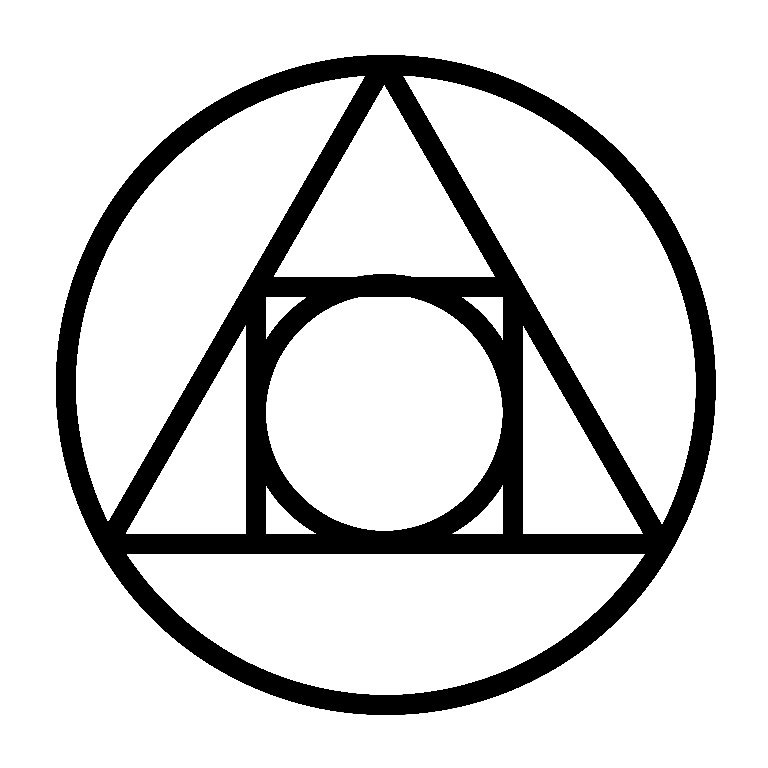The Alchemical Symbol for Earth

The Alchemical Symbol for Earth
Origins and Development
The symbol for Earth (▽ with a horizontal bar through its lower third) is one of the most enduring emblems in natural philosophy. Its lineage begins in Greek cosmology, where Empedocles (5th century BCE) described Earth as one of the four rhizomata (“roots”) of all things—stable, cold, and dry.
By the 4th century BCE, Aristotle refined this cosmology in On the Heavens and On Generation and Corruption, pairing each element with qualities and geometric analogues. Earth was the heaviest and most immobile, its symbol the downward-pointing triangle—the opposite of fire’s upward one—marking descent and gravity. The horizontal line through the triangle was added later, most likely by Hellenistic commentators, to represent the density or “limit” that separates solid matter from the subtler elements.
When the Hermetic and alchemical traditions absorbed Greek cosmology, the glyph entered early Latin manuscripts (circa 11th–12th centuries). In the Liber Hermetis and Rosarium Philosophorum, Earth’s triangle appears beside planetary and metallic emblems—signifying compactness, permanence, and the “body” within matter.
Meaning in Alchemical Doctrine
In alchemy, Earth symbolized the fixed and corporeal principle—that which endures after purification by fire, dissolution by water, and volatilization by air. It was the domain of Salt, one of Paracelsus’ tria prima, representing stability and preservation.
Attributes of the element:
-
Qualities: Cold and dry
-
Direction: North
-
Season: Winter
-
Humor: Melancholic (per Galenic medicine)
-
Associated planet: Saturn (lead, time, mortality)
-
Symbolic color: Green or black (terra nigra, the fertile soil)
In the Renaissance, figures such as Heinrich Khunrath and Robert Fludd described Earth as the “matrix” or “receptacle” of all transformations. It was not inert but the alchemist’s field of labor—the point where spirit and matter meet.
Earth in Texts and Imagery
In Theatrum Chemicum Britannicum (1652), Earth is portrayed as a woman seated upon a cube, holding a cornucopia and a leaden globe—symbols of fertility and endurance.
In Michael Maier’s Atalanta Fugiens (1617), the Earth triangle frames an engraving of miners, reminding the initiate that the Stone’s materials are drawn from the “bowels of the Earth.”
Throughout the R.A.M.S. Library and similar compilations, the glyph denotes solid residue or calcined matter in laboratory notes—especially post-distillation salts or ashes. The practical sense mirrored the metaphysical: Earth was the “coagula” in the alchemical dictum Solve et Coagula—that which binds after dissolution.
Antimony and the Expanded Earth Symbol
By the 16th century, alchemists sometimes paired Earth with Antimony (♁), whose symbol— a circle surmounted by a cross—represented the “perfected body.” Paracelsians viewed antimony as the purified form of Earth, simultaneously toxic and healing, capable of cleansing the metallic body as medicine cleanses the human one. Thus, Antimony was often called Terra Philosophorum, the philosophers’ Earth.
Modern Relevance and Context
In chemistry, the Earth symbol eventually fell out of practical use but persisted in Hermetic, Rosicrucian, and Masonic iconography. Its downward triangle remains a visual shorthand for materialization and grounding—the stage at which celestial principles solidify into form.
Within the broader study of alchemy (see Deciphering the Method series), Earth functions as the baseline of transmutation: the vessel of change where fixed and volatile reconcile. It also echoes through the Book of Aquarius, which insists that the Stone emerges “from the Earth and returns to it.”
Continue exploring:
Deciphering the Method
Book of Aquarius
Alchemical Symbols R.A.M.S. Library of Alchemy
